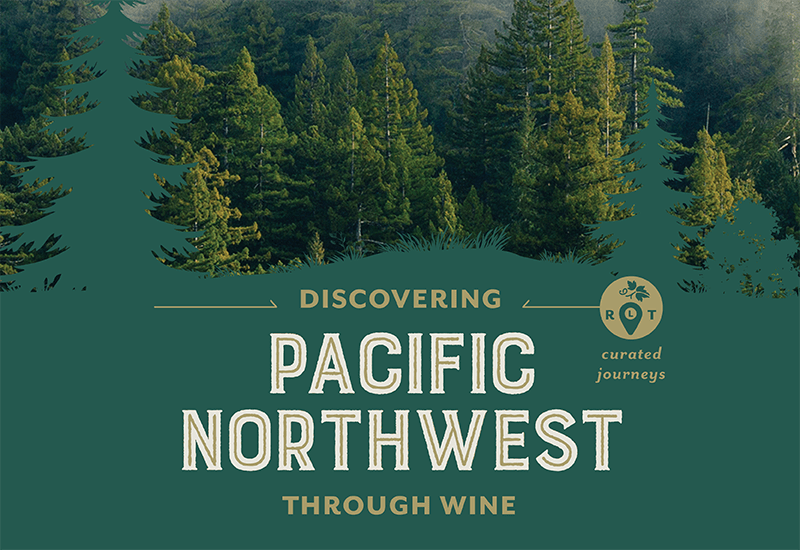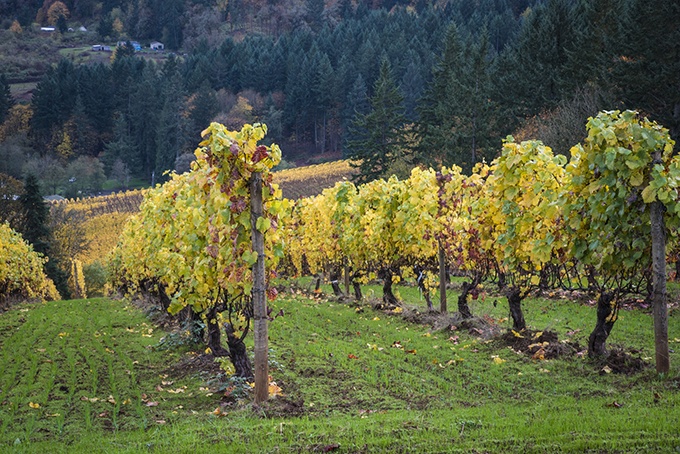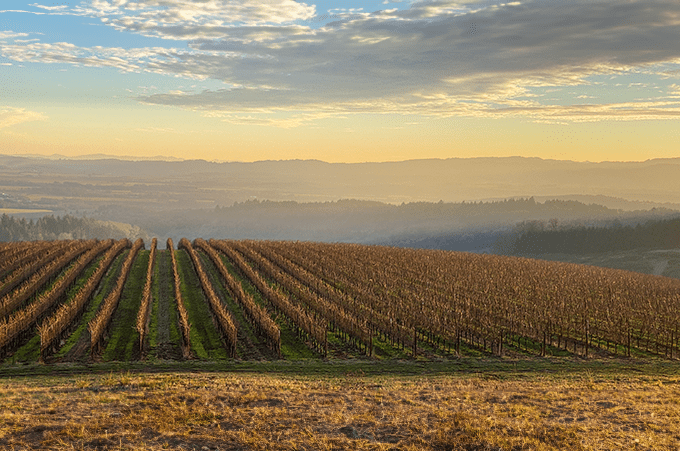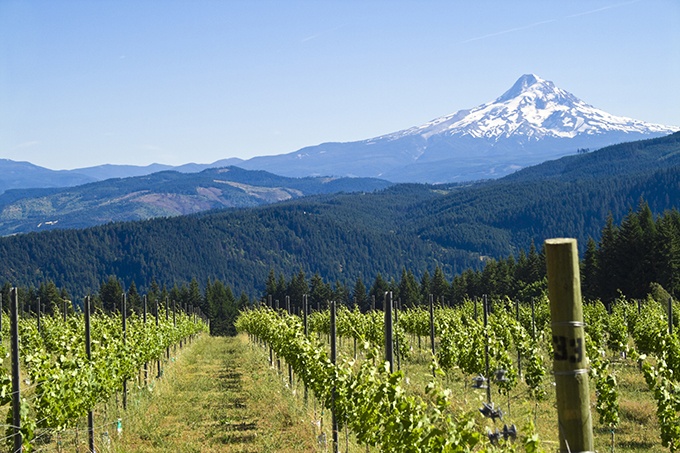Heinen’s Road Less Traveled: Wines of the Pacific Northwest

Several times a year, Heinen’s wine experts go in search of wines from a specific region to fill the Road Less Traveled section of the Wine Department. Their mission is clear, find a region with a unique climate, interesting geography, and wines that reflect a sense of place. Our wine team quickly discovered that the Pacific Northwest (PNW) checked all of those boxes.
Both Oregon and Washington are home to some of the most unique growing regions in the U.S., which allows a diverse number of grape varietals to thrive and produce wines of quality and distinction.
Before opening your first PNW bottle, let’s venture out west and explore the wine regions of Oregon and Washington!

Oregon
The Oregon wine industry began in the 1960s and has been growing ever since, producing world class wines that are amazing with a variety of foods.
When talking about Oregon wine, it’s impossible not to mention the Willamette Valley. It is in the Northwest corner of the state and runs north to south between Eugene and Portland, where it then touches the border of Washington.
The Willamette Valley is a very unique area that sits between two mountain ranges: the Coast Mountain range and the Cascade Mountain range. This produces what’s known as a “Rain Shadow” effect, which protects the Willamette Valley from the coastal, rainy weather that can plague the area. So, the Willamette valley has a cool, moderate microclimate that is well suited for Pinot Noir. It thrives in the cool, dry valley that is naturally shielded from the harsher elements outside of the mountain ranges it is nestled between.
Another unique quality of Oregon wines is that they share the latitude of the famous Burgundy region of France, the 45th parallel. This creates climatic similarities, which help dictate what varietals grow best in each region. Both Burgundy and Oregon are known for stellar Pinot Noir. These red wines can be delicate, hauntingly aromatic, and tend to be lighter in color and tannin.
Other grapes that thrive in Oregon’s Willamette Valley are Pinot Gris (same as Pinot Grigio, but made in a different style in Oregon), as well as Chardonnay. The moderate temperatures of Oregon are not suited for thicker, more robust grapes, like Cabernet Sauvignon that need more sun and heat to ripen.

Washington
Although Washington may be further from the equator than Oregon, the primary growing regions of Washington are east of the Cascade Mountain range, in a near desert-like climate. This makes the grape varietals in Washington much different than Oregon.
Cabernet Sauvignon, Merlot, and Syrah are the all-stars in the Columbia Valley of Washington, where nearly 95% of the state’s wines are produced. A hotter growing area means darker, more robust wines. Within the Columbia Valley, however, are over 16 sub-growing areas, or appellations, that are identified by their climatic differences. The best known sub-regions of the Columbia Valley of Washington are Horse Heaven Hills, Red Mountain, the Wahluke Slope, and Walla Walla Valley.
Interestingly, in the late 19th century, a world-wide pest named phylloxera decimated much of the world’s vines. Many had to be replaced and vines grafted to protect them from this pest. Yet Washington, due to its sandy soils, still has original rootstock because phylloxera cannot survive in sandy soil.
In addition to powerful red wines, Washington is home to the majority of the nation’s Riesling produced in a variety of styles, form sweet and decadent to bone dry.
We hope you are as excited as we are to delve into the wines of the Pacific Northwest. You’ll soon discover a premium sampling of grapes, styles, and blends at an excellent value.



